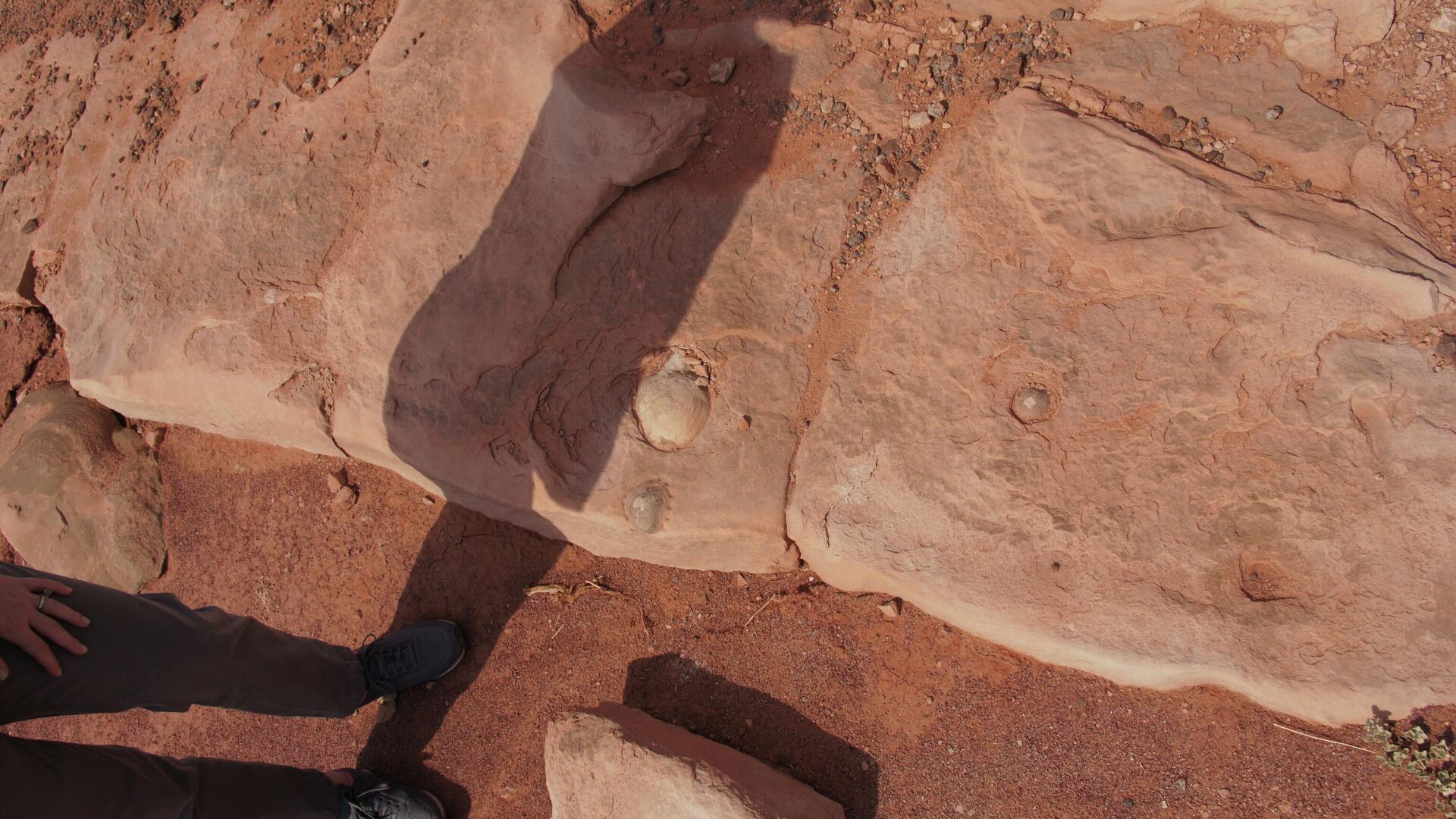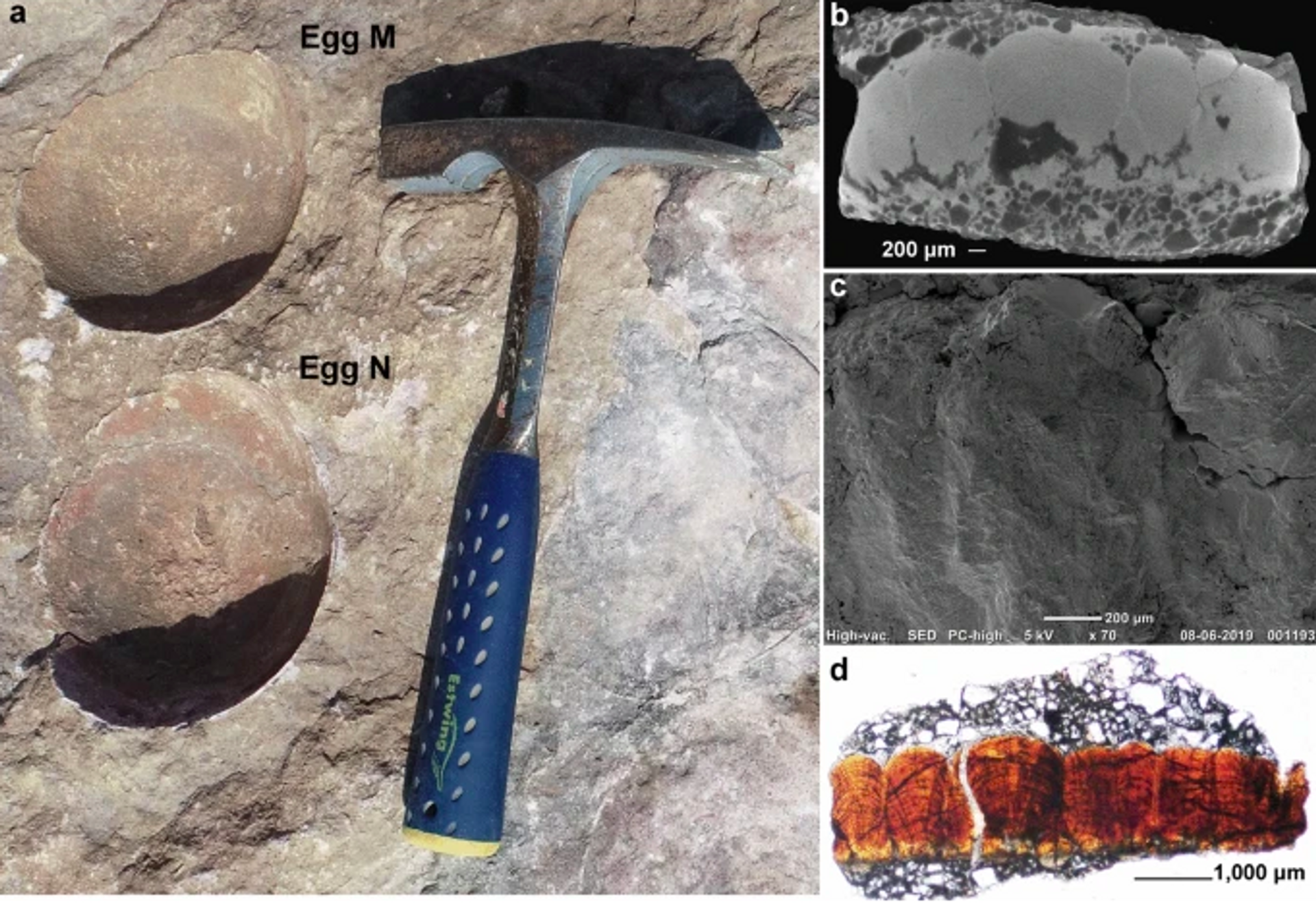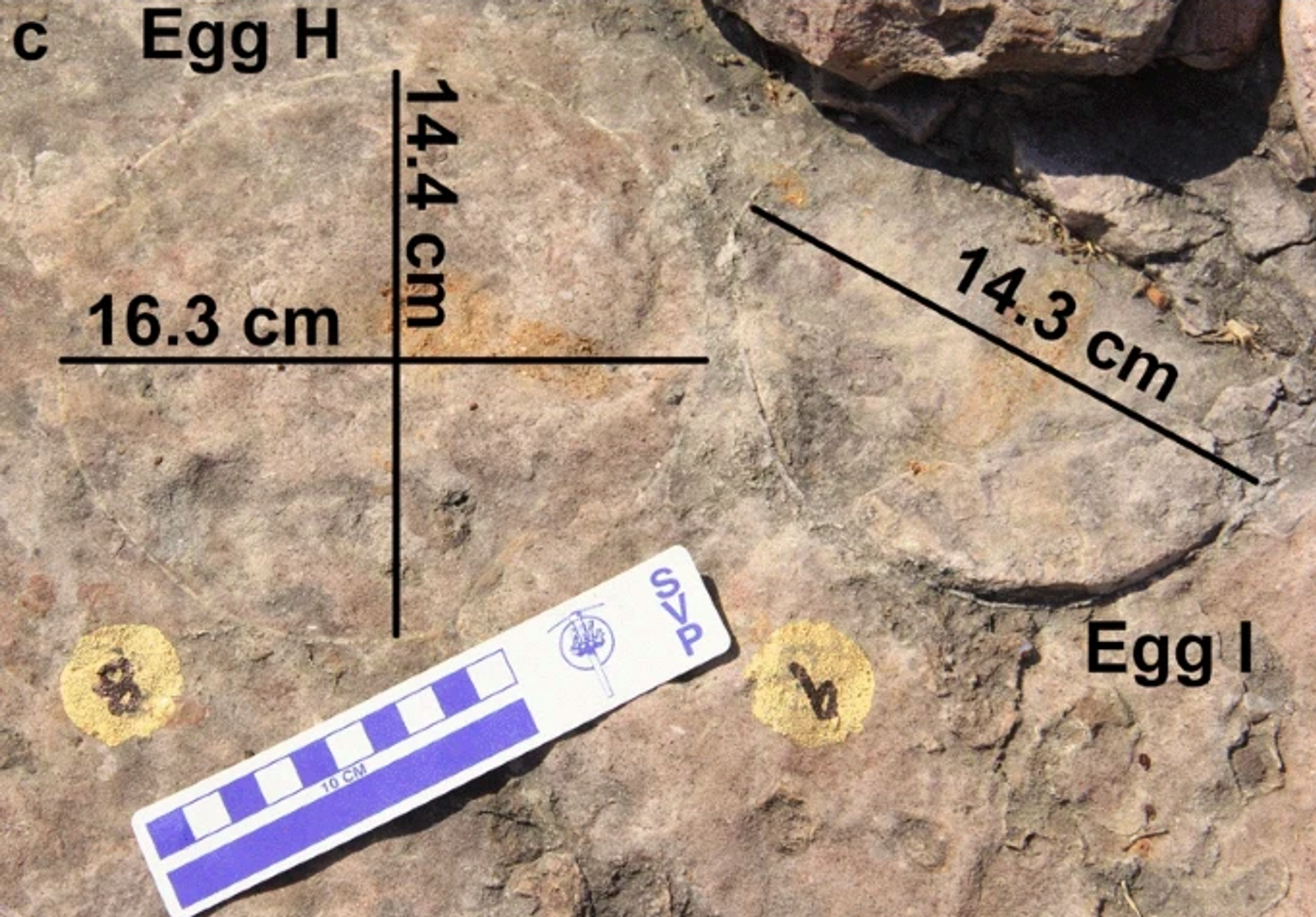https://sputnikglobe.com/20220613/researchers-discover-abnormal-dinosaur-egg-in-indias-madhya-pradesh-1096269612.html
Researchers Discover 'Abnormal' Dinosaur Egg in India's Madhya Pradesh
Researchers Discover 'Abnormal' Dinosaur Egg in India's Madhya Pradesh
Sputnik International
In February, a team of palaeontologists discovered about 10 fossilised eggs of herbivorous dinosaurs belonging to the Cretaceous period, which existed 65... 13.06.2022, Sputnik International
2022-06-13T13:08+0000
2022-06-13T13:08+0000
2022-07-19T10:44+0000
madhya pradesh
dinosaurs
dinosaur eggs
dinosaur
dinosaur
cretaceous period
cretaceous
https://cdn1.img.sputnikglobe.com/img/07e6/06/0d/1096272654_0:159:3077:1890_1920x0_80_0_0_e613f9a0eb9bd5e6c6de23d6e609476b.jpg
A team of Indian researchers has discovered a rare form of fossilised dinosaur eggs "with one egg nesting within the other", in the Dhar district in India's state of Madhya Pradesh.The eggs within the eggs are a rare phenomenon, so far known to have occurred only in birds, and never in reptiles.The study, published last week in the journal Scientific Reports titled "First ovum-in-ovo pathological titanosaurid egg, throws light on the reproductive biology of sauropod dinosaurs". Dinosaurs of the Sauropod family were among the largest land animals to have lived and were widespread millions of years ago. Most of their remains have been found in the Indian states of Gujarat, Madhya Pradesh, and Meghalaya. The new find can help scientist to a better understanding of the dinosaurs' reproductive system."So far, there has been no report of ovum-in-ovo egg pathology in dinosaur eggs. Considering that the derived theropods [the type of dinosaur] share reproductive features with birds, this pathology might have existed in dinosaurs," the study reads.The eggs have an average circumference of 40cm and an average weight of 2.6kg.So far, it has been believed that dinosaurs had a reproductive function similar to that of turtles and other reptiles (unsegmented oviduct) rather than the segmented reproductive tract of crocodiles and birds with separate regions of membrane and shell deposition.
madhya pradesh
Sputnik International
feedback@sputniknews.com
+74956456601
MIA „Rossiya Segodnya“
2022
Deexa Khanduri
https://cdn1.img.sputnikglobe.com/img/07e4/0c/1e/1081607388_0:0:961:960_100x100_80_0_0_e9e931b8c1e18fb41f3074e2145d7a3a.jpg
Deexa Khanduri
https://cdn1.img.sputnikglobe.com/img/07e4/0c/1e/1081607388_0:0:961:960_100x100_80_0_0_e9e931b8c1e18fb41f3074e2145d7a3a.jpg
News
en_EN
Sputnik International
feedback@sputniknews.com
+74956456601
MIA „Rossiya Segodnya“
Sputnik International
feedback@sputniknews.com
+74956456601
MIA „Rossiya Segodnya“
Deexa Khanduri
https://cdn1.img.sputnikglobe.com/img/07e4/0c/1e/1081607388_0:0:961:960_100x100_80_0_0_e9e931b8c1e18fb41f3074e2145d7a3a.jpg
madhya pradesh, dinosaurs, dinosaur eggs, dinosaur, dinosaur, cretaceous period, cretaceous
madhya pradesh, dinosaurs, dinosaur eggs, dinosaur, dinosaur, cretaceous period, cretaceous
Researchers Discover 'Abnormal' Dinosaur Egg in India's Madhya Pradesh
13:08 GMT 13.06.2022 (Updated: 10:44 GMT 19.07.2022) Deexa Khanduri
Sputnik correspondent
In February, a team of palaeontologists discovered about 10 fossilised eggs of herbivorous dinosaurs belonging to the Cretaceous period, which existed 65 million years ago - an era which is often referred to as the last gasp of the "Age of Dinosaurs".
A team of Indian researchers has discovered a rare form of fossilised dinosaur eggs "with one egg nesting within the other", in the
Dhar district in India's state of Madhya Pradesh.
The eggs within the eggs are a rare phenomenon, so far known to have occurred only in birds, and never in reptiles.
The study,
published last week in the journal Scientific Reports titled "First ovum-in-ovo
pathological titanosaurid egg, throws light on the reproductive biology of sauropod dinosaurs".
Dinosaurs of the Sauropod family were among the largest land animals to have lived and were widespread millions of years ago. Most of their
remains have been found in the Indian states of Gujarat, Madhya Pradesh, and Meghalaya.
The new find can help scientist to a better understanding of the dinosaurs' reproductive system.
"So far, there has been no report of ovum-in-ovo egg pathology in dinosaur eggs. Considering that the derived theropods [the type of dinosaur] share reproductive features with birds, this pathology might have existed in dinosaurs," the study reads.
The eggs have an average circumference of 40cm and an average weight of 2.6kg.
"The new discovery of an ovum-in-ovo egg, characteristic of birds in titanosaurids are for a segmented oviduct as in crocodiles and birds, and possible sequential laying of eggs as in birds," the authors aver.
So far, it has been believed that dinosaurs had a reproductive function similar to that of turtles and other reptiles (unsegmented oviduct) rather than the
segmented reproductive tract of crocodiles and birds with separate regions of membrane and shell deposition.




